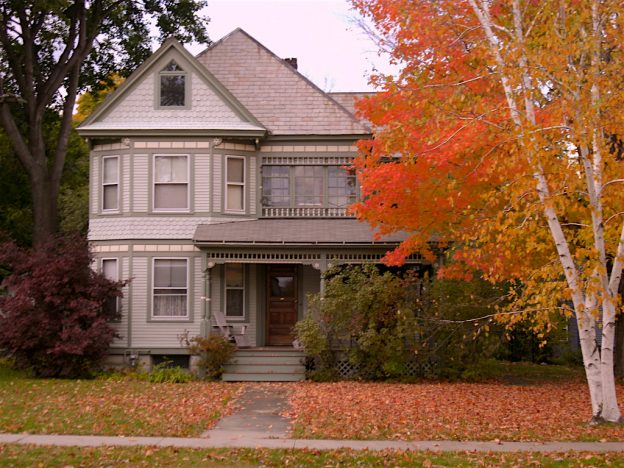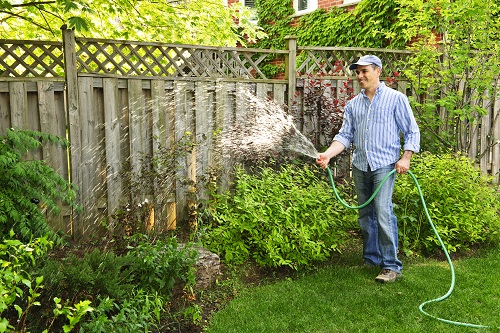Fall landscaping chores are your last chance to prepare your property for winter, and to protect that curb appeal you’ve worked so hard to create. So pull on some gloves, grab your tools, and get ready to mulch, prune, and plant before snow and frozen ground turn the lights out on your landscaping.
Spread Mulch
“Fall mulching is better for the plants than spring mulching,” says Dan Taft, owner of The Cutting Edge in Chantilly, Va. “It helps protect roots from frost and helps retain moisture during a cold and dry winter.”
Spread 2 to 3 inches of fresh mulch around shrubs and trees. Taft warns home owners to avoid using free mulch from municipal piles, which often contain disease spores; instead, buy hardwood shredded mulch from home and garden centers, he says.
“Cheap, dump mulch mainly is made from trees that have died from disease,” Taft says. “Many diseases will linger in the mulch, like leaf spot and pine bark borers. You don’t want ground-up diseased plants around your landscaping.”
Remove the Dead and Dying
Fall isn’t the time to prune, because that encourages growth when healthy plants should remain dormant. But don’t shelve your shears and loppers yet. Fall is the time to neaten your landscaping before putting it to bed for the winter.
“If you remove dead landscaping in fall, you don’t have to look at it all winter,” Taft says.
- Remove dead annuals.
- Deadhead spent blooms, and cut back dead and desiccated ornamental grasses and perennials.
- Lightly prune dead and dying branches from shrubs and trees. Carefully remove dried blossoms from hydrangea, but don’t remove dead-looking stalks, where new buds will form in spring.
- After the first frost, cut back tea roses to about a third of their height.
Wrap Delicate Shrubs
Heavy snow, ice, and high winds can dry and split your delicate and pricey shrubs. To protect your landscaping from the winter elements:
- Hide small plants under overturned plastic pots or buckets.
- Wrap shrubs, such as boxwoods, in burlap.
- Surround vulnerable trees with shredded leaves.
Take Advantage of Fall Sales
Early fall until the ground freezes is a good time to plant trees and shrubs. Not only do cooler weather and autumn rain put less stress on young landscaping plants, nurseries often have sales to empty their shelves before winter.
“They need to sell every plant by Dec. 1,” Taft says. “Nurseries generally pay a third of the price that you’re paying. So don’t be afraid to offer less than the asking price. If you’re buying several things, the manager may give you a break.”
Visit HouseLogic.com for more articles like this. Reprinted from HouseLogic.com with permission of the NATIONAL ASSOCIATION OF REALTORS®.
Featured Image Photo Credit: “Williamstown, Massachusetts” by Doug Kerr © 2010 (CC BY-SA 2.0; Edited)















